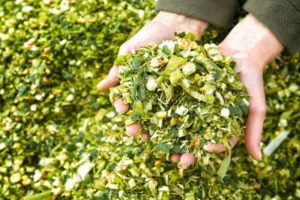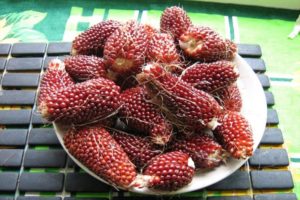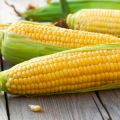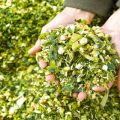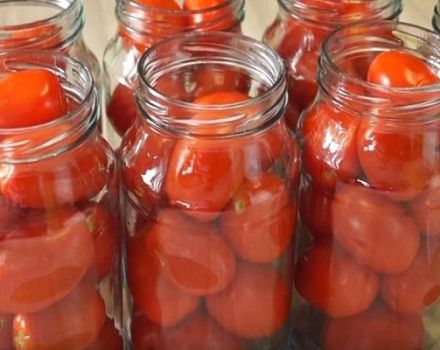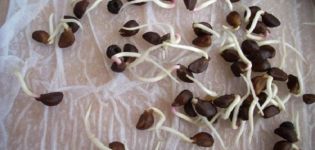Areas where corn grows and is best grown in Russia and the world
Corn or maize is one of the leading food, forage and industrial crops today. This is the oldest bread plant on our planet. Many countries of the world where corn grows are grain exporters of this crop.
The homeland of wild maize is Central and South America. Grain was brought to Europe by Columbus back in 1496. Culture came to Russia during the Russian-Turkish war in 1768-1774. Its spread throughout the country began in Bessarabia, where maize was cultivated everywhere.
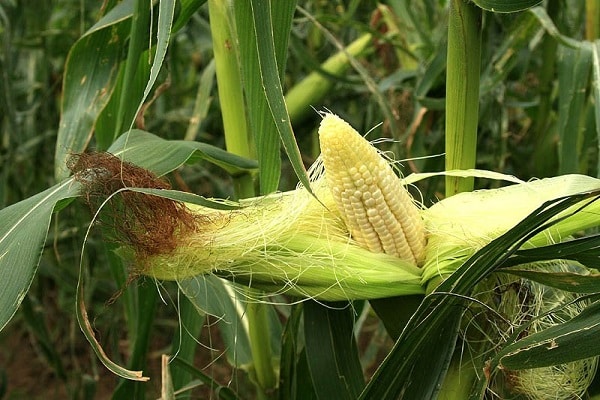
In Turkey, maize is called "kokoroz" - a tall plant. Thanks to N. Khrushchev, active breeding of culture began in our country in the 60s of the last century. Due to the breeding of a large number of zoned varieties and hybrids, the cultivation of corn is now practiced in Siberia, the Urals, and the Far East.
How does corn grow?
Corn in Russia is cultivated for grain and green forage. The main advantage of culture is yield: corn can produce 4.5 and more tons of grain and 17 tons of green mass from 1 hectare. Corn grain is used to produce flour, starch, ethanol, dextrin, glucose, syrup, oil, and vitamin E. It is canned, processed into cereals and flakes, and used for the production of compound feed.
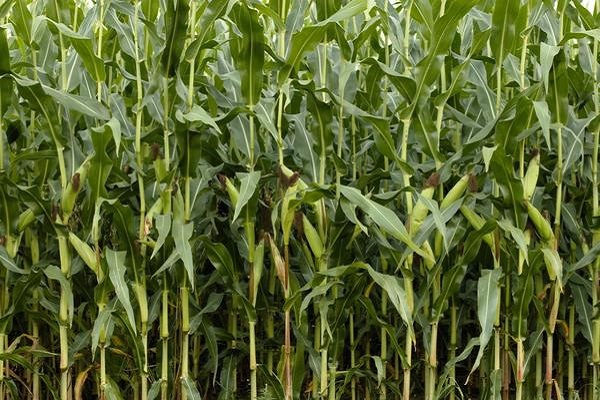
Corn is a tall, annual herbaceous crop. The stem can reach a height of 3 m or more. Today, undersized varieties are also widely cultivated. The stem can reach 7 cm in diameter. The leaves are large, about 1 m long and 10 cm wide, linear-lanceolate. There can be from 8 to 42 leaves on 1 stem.
The plant has a powerful, well-developed root system that penetrates the soil to a depth of 1 m or more. Roots can also form on the lower nodes of the stem - to provide the plant with additional moisture and nutrients, as well as support.
Maize is a monoecious, wind-pollinated plant, so its flowers are unisexual: males form panicles at the top of the stems, and females form cobs located in the axils of the leaves. The yield is determined depending on the variety. Corn on 1 shoot can form 1-2 cobs (or more) 4-50 cm long and 2-10 cm in diameter.
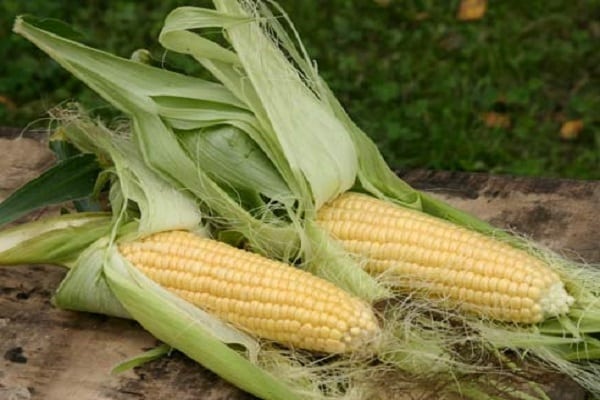
The weight of the cob can be 30-500 g. The cobs are sealed in leaf-like wrappers, and only long pistillate columns come out. The wind transfers pollen from male inflorescences to the pistils of the ears, on which, after fertilization, fruits - caryopses - are formed. Self-pollination of the plant is impossible. Small areas may require manual pollen collection and pollination.
The caryopses have a cubic or rounded shape, they are planted tightly to each other and are located on the stem of the cobs in rows. 1 cob can contain up to 1 thousand grains. In most cases, the fruits are yellow, but there are also varieties with red, purple, blue and even black grains.

In order to learn how to distinguish between varieties, you can use the description and photo presented on the package with seeds; the cultivation of maize, depending on the variety, lasts 90-150 days. Seedlings appear 10-12 days after the seeds are embedded in the soil. Initially, it is a thermophilic culture that germinates at + 8 ... 10 ºС and develops at + 20 ... 24 ºС.
There are a large number of zoned and adapted varieties and hybrids with a short growing season. They are able to grow and bear fruit in the cold climate of Siberia and other regions at lower temperatures and withstand frosts down to -3 ºС.
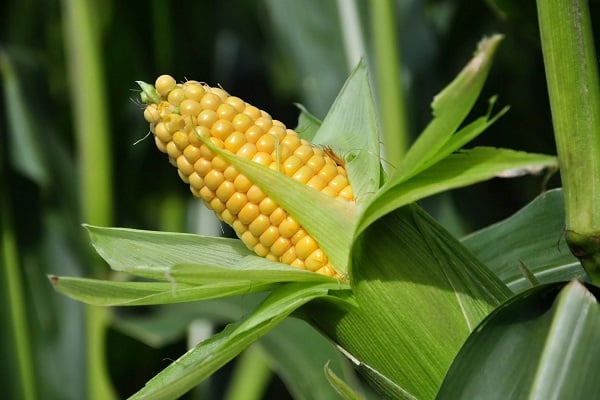
Corn is a light-loving crop. Illumination is especially important at the beginning of the growing season. Therefore, the optimal sowing method is a square-nest, in which the darkening of each other's shoots is minimal.
Maize is dependent on soil aeration. Loosening and other processing of the soil is necessary to obtain a good harvest. The culture is dependent on moisture intake. In hot weather, 1 plant can absorb more than 1 liter of water.
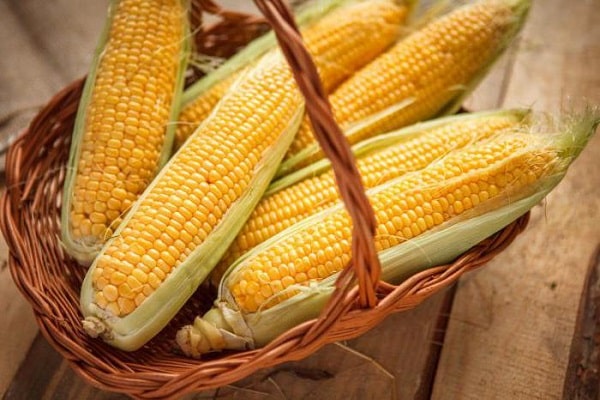
A large volume of green mass and a high content of monosaccharides involved in milk fermentation during ensiling is the reason that corn is the main silage crop in our country.
Maize is referred to as row crops. In the crop rotation, it takes the place of the predecessor of grain and leguminous crops or a steam planting when grown for green fodder.
Despite the fact that the plant greatly depletes the soil and degrades its structure, it frees it from weeds, many diseases and pests. In the south of the country, corn is sown in repeated crops.
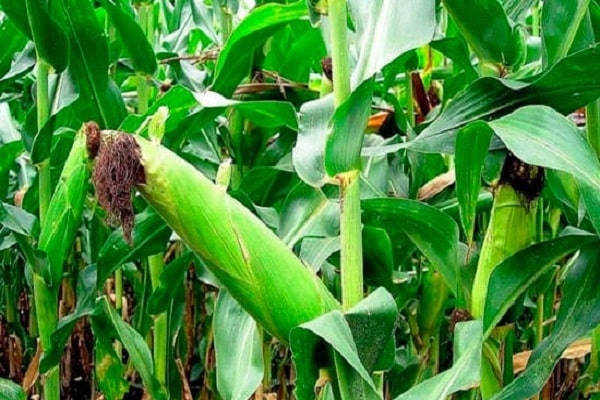
What kind of soil is needed for corn?
The main areas for the cultivation of maize for grain for the production of animal feed and for the food industry are Central Asia, Transcaucasia, the North Caucasus, the Central Black Earth region and the Volga region. This is due to the fact that the best soils for growing crops are fertile: black soil, floodplain river and structural field soils. Corn can grow on sandy loams, dark gray loams and peat bogs. The plant develops and bears fruit poorly on heavy clay, waterlogged, salty and acidic soils.
Corn for green fodder is less whimsical, and therefore is cultivated everywhere, including in the Non-Black Earth Region, on peat bog and sod-podzolic soils.
The culture requires a soil with a neutral reaction of the environment, slightly acidic soils are also acceptable. To grow maize on podzolic, acidic soils, dolomite, wood ash and organic fertilizers (humus, compost, peat) are added before planting. With sufficient application of organic and mineral fertilizer corn can be grown on sandy soil.
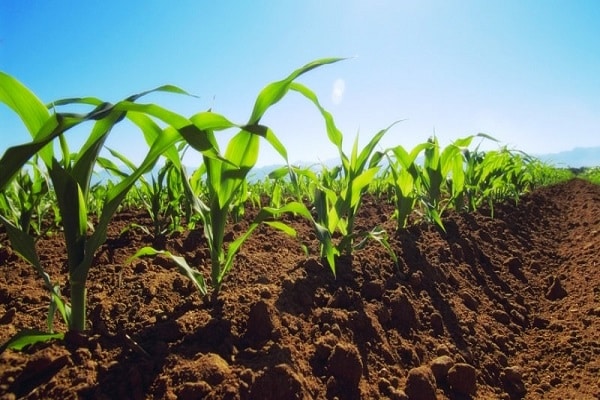
Due to the peculiarities of the root system, the plant needs loose soils with good aeration, enriched with oxygen.
On soils contaminated with weeds, especially pink bitterness, creeping wheatgrass, sow-thistle, and other rhizome and root-sucking weeds, corn grows poorly. This is especially important at the stage of emergence.
When growing grain for the food industry, the soil should have enough phosphorus, potassium, calcium, sulfur, iron, magnesium, manganese, boron, chlorine, iodine, zinc, copper and other substances.

The mineral composition of the soil is of the greatest importance at the beginning of the growing season, as well as at the stage of ear formation and milk ripeness of grain. Timely application of organic and mineral fertilizing is an important condition for obtaining a high yield and high-grade corn grain for the food industry.
In the first half of the growing season, the plant especially needs nitrogen, phosphorus and potassium, and after the beginning of flowering, phosphorus and potassium. Excess nitrogen retards grain formation.

How long does corn grow?
The length of the growing season for maize depends on the variety or hybrid of the plant. It can last from 90 to 150 days. Since Russia is 95% an area of risky farming, early maturing varieties are the most popular. In this case, the grain has time to ripen before the onset of cold weather.
In the Urals, when sown in open ground, even the earliest varieties do not have time to ripen, so maize is cultivated here for green fodder. To obtain grain, they practice preliminary cultivation of seedlings, however, this method is not used in large volumes. Seedlings are planted from the second half of May. Harvesting occurs in August-September.

For the cultivation of corn in the North-West region and, in particular, in the Leningrad region, hybrids of the first generation (F1 Candle, Spirit, Trophy and others) with a short growing season are used, the ears of which ripen 70-75 days after germination. For small areas, use the seedling cultivation method. In the southern part of the region, varieties with a ripening period of 90-100 days can be cultivated. Corn grown in the Pskov region is sown outdoors in May and harvested in the first weeks of September.
Can corn grow without human intervention?
The genus corn includes 6 plant species, but only 1 of them - sugar corn suitable for human consumption. There are no wild-growing varieties that can grow without preliminary cultivation of the land in the open field.
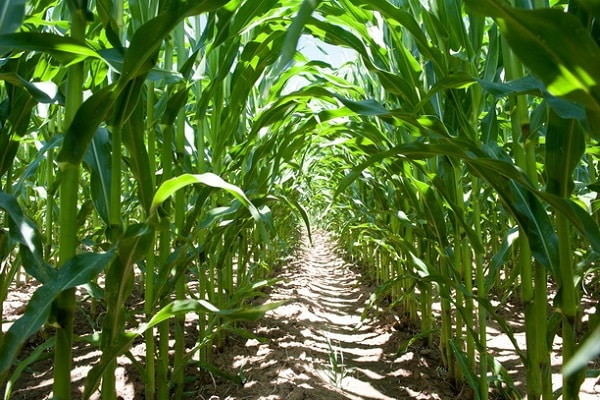
In abandoned areas, you can find plants growing on their own. In this case, seeds from unharvested or overripe and spilled cobs germinate without tillage, in the open ground.
Over time, with repeated self-sowing, the characteristic properties of the variety are lost, and the use of such corn becomes possible only for feeding farm animals. The conditions necessary for the full ripening of the grain are rare in this case.
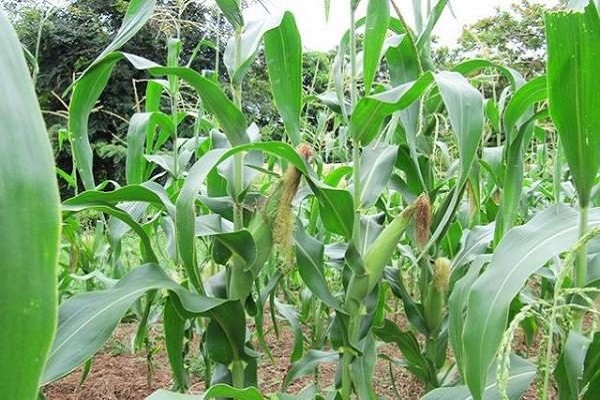
Where does corn grow: producing countries
Corn is cultivated with varying success in many countries of the world with suitable climates and conditions created by both nature and man. Most of the states of the American continent, Asia and Europe are leaders in grain production.
According to the UN Food and Agriculture Organization, Ukraine (6th place) and Russia (9th place) are among the leaders in the production and export of corn. The member states of the European Union collect about 6.5% of the world's total corn production, while the CIS members jointly produce only 4.6%.
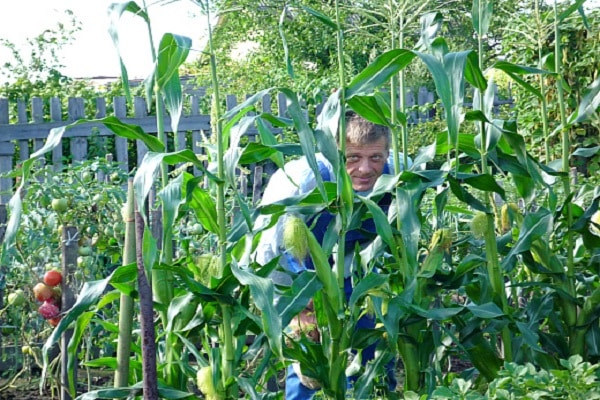
Exporting countries of corn
The leading role in the production of maize belongs to the United States. More than 380 thousand tons of corn grain is produced in this country annually.
Other top corn growing countries (according to the UN Food and Agriculture Organization):
- China (over 230 thousand tons).
- Brazil (over 64 thousand tons).
- Argentina (over 39.5 thousand tons).
- Mexico (about 28 thousand tons).
- Ukraine (about 28 thousand tons).
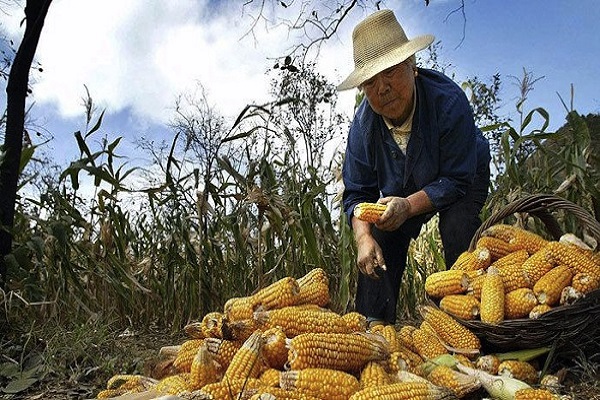
Which country does corn grow best in?
Since the historical homeland of maize is Mexico and the Caribbean coast, the crop grows best in countries with similar climates and soils. Moreover, only in the USA, Canada and France, which are among the top ten leading exporters of corn grain, there is a high crop yield. In the rest of the countries, the volumes are achieved by increasing the cultivated area.
Among the countries that trade in maize in the world, the best yield is in Greece - 13.5 t / ha, the Netherlands - 11.8 t / ha; at the same time, the average yield in the EU countries in 2017 was only 6.91 t / ha. In the USA, about 10 tons of grain are harvested per hectare.At the same time, the yield grows per year by at least 1%. The same applies to Western Europe.
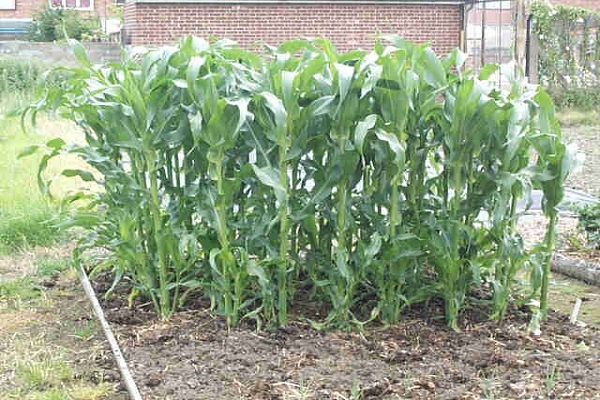
In Russia, despite unfavorable conditions in most of the territory, the yield is within the global range - 5.6 t / ha. And in China, there is a downward trend in yields.
Good corn is growing in their original homeland: Mexico, Brazil, Argentina. These countries produce and export corn grits and flour.
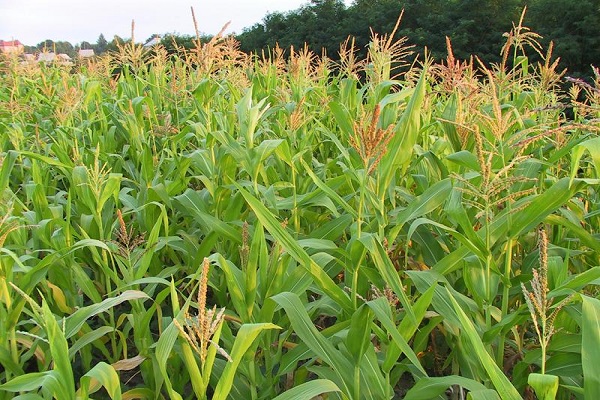
Where does corn grow in Russia?
A large selection of zoned hybrids and varieties allows sowing corn in many regions of the Russian Federation. Basically, grain crops are grown in the North Caucasus, the Volga region, the Central Black Earth Region, the southern regions of the Far East and Siberia, and in other regions. And for silage and green fodder - almost everywhere, with the exception of the extreme northern regions and the Northern Economic Region. The total area under crops is about 3 million hectares.
Warm black earth areas are the best for cultivation, and the Russian Federation, despite the climatic features, is among the leaders in the production and export of maize in the world. Krasnodar Territory is the first in the five leading corn grain producers.
Today in Russia the area of cultivation of crops is about 2800 thousand hectares.

Where does grain corn grow in Russia
The main areas of corn growing in the Russian Federation:
- Krasnodar Territory (3368 thousand tons - 34% of the gross grain volume).
- Stavropol Territory (932 thousand tons - 9.5%).
- Belgorod region (747 thousand tons - 7.6%).
- Rostov region (632 thousand tons - 6.4%).
- Kursk region (529 thousand tons - 5.4%).
- Voronezh (518 thousand tons - 5.3%).
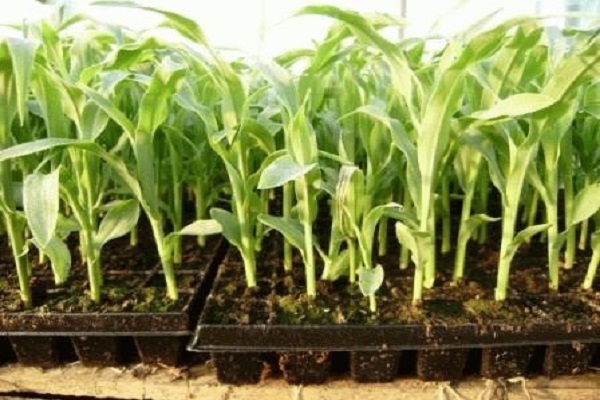
The soils and climatic conditions in these areas are optimal for growing maize.
More than 1% of the total volume is produced by such areas of Russian corn growing as Kabardino-Balkaria, the republics of Tatarstan and North Ossetia, Tambov, Lipetsk, Saratov regions, Mordovia.
The best yield indicators were recorded in the Moscow (70.6 c / ha), Kaliningrad (67.4 c / ha) and Oryol (63.7 c / ha) regions.

